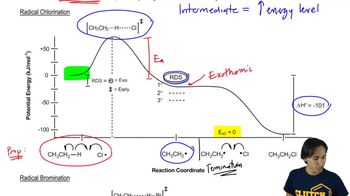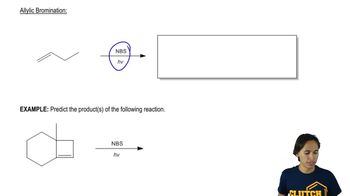Multiple Choice
What is the major organic product of the following reaction?

 Verified step by step guidance
Verified step by step guidance Verified video answer for a similar problem:
Verified video answer for a similar problem:



 1:08m
1:08mMaster Radical selectivity:Alcoholics Anonymous Version with a bite sized video explanation from Johnny
Start learning